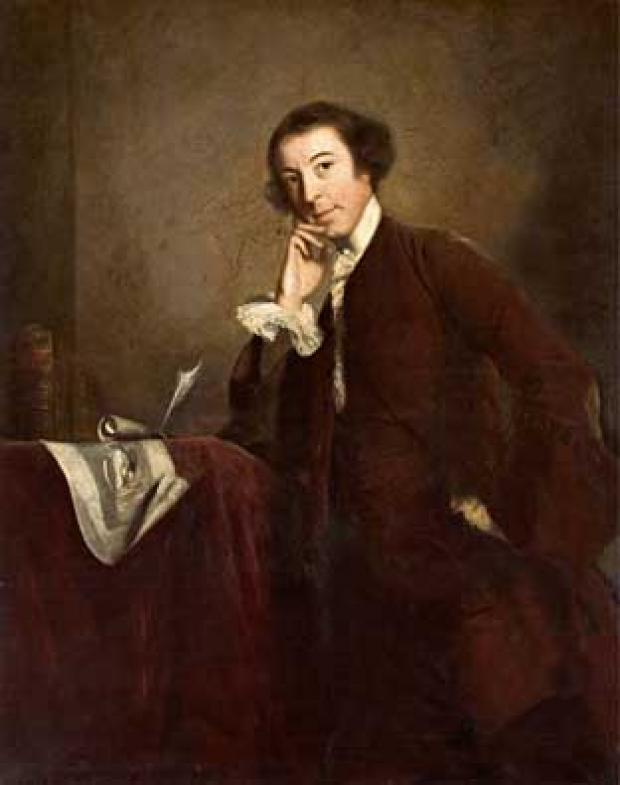2012 (286)
2013 (161)
2019 (2)



Horatio Walpole, 4th Earl of Orford (24 September 1717 – 2 March 1797) was an English art historian, man of letters, antiquarian and Whig politician.[1] He is now largely remembered for Strawberry Hill, the home he built in Twickenham, south-west London where he revived the Gothic style some decades before his Victorian successors, and for his Gothic novel, The Castle of Otranto. Along with the book, his literary reputation rests on his Letters, which are of significant social and political interest. He was the son of Sir Robert Walpole, and cousin[2] of Admiral Lord Nelson.
Grand Tour: 1739–1741
Walpole went on the Grand Tour with Gray, but as Walpole recalled in later life: "We had not got to Calais before Gray was dissatisfied, for I was a boy, and he, though infinitely more a man, was not enough to make allowances".[18] They left Dover on 29 March and arrived at Calais later that day. They then travelled through Boulogne, Amiens and Saint-Denis, arriving at Paris on 4 April. Here they met many aristocratic Englishmen.[19] In early June they left Paris for Rheims, then in September going to Dijon, Lyons, Dauphiné, Savoy, Aix, Geneva, and then back to Lyons.
In October they left for Italy, arriving in Turin in November, then going to Genoa, Piacenza, Parma, Reggio, Modena, Bologna, and in December arriving at Florence. Here he struck up a friendship with Horace Mann, an assistant to the British Minister at the Court of Tuscany.[20] Here he penned the Epistle from Florence to Thomas Ashton, Esq., Tutor to the Earl of Plymouth, a mixture of Whig history and Middleton's teachings.[21] In February 1740 Walpole and Gray left for Rome with the intention of witnessing the papal conclave upon the death of Pope Clement XII (which they never did see).[22] At social occasions in Rome he saw the Old Pretender James Francis Edward Stuart and his two sons, Charles Edward Stuart and Henry Stuart, although there is no record of them conversing.[23]
Walpole and Gray returned to Florence in July. However Gray disliked the idleness of Florence as compared to the educational pursuits in Rome, and an animosity grew between them, eventually leading to an end to their friendship.[24] On their way back to England they had a furious argument, although it is unknown what it was about. Gray went to Venice, leaving Walpole at Reggio.[25] In later life Walpole admitted that the fault lay primarily with himself: "I was too young, too fond of my own diversions, nay, I do not doubt, too much intoxicated by indulgence, vanity, and the insolence of my situation, as a Prime Minister's son, not to have been inattentive and insensible to the feelings of one I thought below me; of one, I blush to say it, that I knew was obliged to me; of one whom presumption and folly perhaps made me deem not my superior then in parts, though I have since felt my infinite inferiority to him".[26]
Walpole then went to Venice, Genoa, Antibes, Toulon, Marseilles, Aix, Montpellier, Toulouse, Orléans, Paris. He finally landed at Dover on 12 September 1741, reaching London on the 14th.[27]
- Some Anecdotes of Painting in England (1762)
- The Castle of Otranto (1764)
- The Mysterious Mother (1768)
- Historic Doubts on the Life and Reign of Richard III (1768)
- On Modern Gardening (1780)
- A Description of the Villa of Mr. Horace Walpole (1784)
- Hieroglyphic Tales (1785)
from wiki
........



